- International
- New York/Region
- NYT Front Page
- Crossword/Games
- Dining & Wine
- Fashion & Style
- Home & Garden
- Learning Network
- Multimedia/Photos
- Week in Review
- Editorials/Op-Ed
- Readers' Opinions
- The Public Editor

CLASSIFIEDS
- Real Estate
- All Classifieds
Side Trip: Girona
Often ignored by travelers who bolt from its airport to the resorts of the Costa Brava, Girona is an easy and worthy day trip from Barcelona. Much of the city's charm comes from its narrow medieval streets -- with frequent stairways, as required by the steep terrain. Historic sites include the cathedral, which dominates the city from the top of 90 steps; Arab baths; and a charming Jewish quarter. Northern Catalonia is memorable for the soft, green hills of the Ampurdan farm country, the Alberes mountain range at the eastern tip of the Pyrenees, and the rugged Costa Brava. Sprinkled across the landscape are charming masías (farmhouses) with austere, grayish or pinkish staggered-stone rooftops and ubiquitous square towers that make them look like fortresses. Even the tiniest village has its church, arcaded square, and rambla, where villagers take their evening paseo.
97 km (60 mi) northeast of Barcelona.
If you drive here, park in the free lot next to the River Onyar, under the train trestle. Walk along the river to Plaça de la Independencia, admiring Girona's best-known view as you go: the town's pastel yellow, pink, and orange waterfront facades, their windows draped with a colorful mix of drying laundry reflected in the shimmering Onyar. Cross the bridge from under the arcades in the corner of the Plaça and find your way to the tourist office, to the right at Rambla Llibertat 1. Then work your way up through the labyrinth of steep streets, using the cathedral's huge Baroque facade as a guide.
At the base of the Girona cathedral's 90 steps and left through the Sobreportes gate are the Banys Arabs (Arab Baths), or Arab Baths. Built by Morisco craftsmen in the late 12th century, long after Girona's Islamic occupation (795-1015) had ended, the baths are both Romanesque and Moorish in design. COST: EUR2. OPEN: Apr.-Sept., Mon.-Sat. 10-7, Sun. 10-2; Oct.-Mar., Tues.-Sun. 10-2.
Across the River Galligants is the church of Sant Pere (St. Peter), finished in 1131 and notable for its octagonal Romanesque belfry and the finely detailed capitals atop the columns in the cloister. Next door is the Museu Arqueològic, which documents the region's archaeological history since Paleolithic times. COST: Church and museum EUR2. OPEN: Apr.-Sept., Tues.-Sat. 10:30-1:30 and 4-7, Sun. 10-2; Oct.-Mar., Tues.-Sat. 10-2 and 4-6, Sun. 10-2.
A five-minute walk uphill behind the Girona cathedral leads to the Torre de Gironella , the highest point in the Jewish quarter. It was here that Girona's Jewish community took refuge in early August of 1391, emerging 17 weeks later to find their houses in ruins. Even though Spain's expulsion decree didn't take effect until 1492, this attack ended the Girona Jewish community. On December 20, 1998, the first Hanukkah celebration in 607 years was held in the gardens, with representatives of the Jewish communities of Spain, France, Portugal, Germany, and the United States present and Jerusalem's chief Sephardic rabbi, Rishon Letzion, presiding.
To see the inside of Girona's Catedral , designed by Guillem Bofill in 1416, complete the loop around it. The cathedral is known for its immense, uncluttered Gothic nave, which at 75 feet is the widest in the world and the epitome of the spatial ideal of Catalan Gothic architects. The museum contains the famous Tapis de la Creació ( Tapestry of the Creation ) and a 10th-century copy of Beatus's manuscript Commentary on the Apocalypse. The stepped Passeig Arqueològic runs below the walls of the Old City; climb through the Jardins de la Francesa to the highest ramparts for a view of the 11th-century Romanesque Torre de Carlemany (Charlemagne Tower), the oldest part of the cathedral. COST: EUR3, free at mass. OPEN: July-Sept., Tues.-Sat. 10-8, Sun. 10-2; Oct.-June, Tues.-Sat. 10-2 and 4-7, Sun. 10-2.
Next door to Girona's cathedral is Palau Episcopal (Bishop's Palace), which houses the Museu d'Art , a good mix of Romanesque, Catalan Gothic, and modern art. COST: EUR2.50. OPEN: Mar.-Sept., Tues.-Sat. 10-7, Sun. 10-2; Oct.-Feb., Tues.-Sat. 10-6, Sun. 10-2.
What was once the cramped and squalid center of the 13th-century Call, or Jewish quarter, is the sight of the Centre Bonastruc ça Porta , the lifeblood of the activities that refer to the recuperation of the Jewish heritage of Girona. Its Museu de Història dels Jueus (Museum of Jewish History) has 21 stone tablets, one of the finest collections in the world of medieval Jewish funerary slabs. Carrer de la Força 8, Girona, Catalonia, Spain. PHONE: 972/216761. COST: EUR2.50. OPEN: May-Sept. , Mon.-Sat. 10-8, Sun. 10-3; Oct.-Apr., Mon.-Sat. 10-6, Sun. 10-3.
El Celler de Can Roca . Girona's best restaurant and one of Catalonia's top six, this unusual spot west of town might serve anything from steak tartare with mustard ice cream to simple vieiras (scallops) with peas or a surf 'n turf of pies de porc amb espardenyes (trotters with sea slugs). Ctra. Taialà 40, 2 km (1½ mi) west of Girona, Sant Gregori first roundabout to Taialà, Girona, Catalonia, Spain. PHONE: 972/222157. AE, DC, MC, V. Closed Dec. 23-Jan. 15, 1st 2 wks in July, and Sun. and Mon.
Albereda . Excellent Ampurdan cuisine is served in a bright but soothing dining room. Try the galleta con langostinos glaceada, a zucchini bisque with prawns. C. Albereda 7 bis, Girona, Catalonia, Spain. PHONE: 972/226002. AE, DC, MC. Closed Sun.
Cal Ros . Tucked under the arcades just behind the north end of Plaça de la Llibertat, this historic place combines ancient stone arches with a crisp, contemporary interior and cheerful lighting. The cuisine is gamey and delicious: hot goat-cheese salad with pine nuts and garum (black-olive and anchovy paste dating back to Roman times), oca amb naps (goose with turnips), and a blackberry sorbet not to miss. C. Cort Reial 9, Girona, Catalonia, Spain. PHONE: 972/217379. MC, V. Closed Mon. No dinner Sun.
Penyora . Here you'll find both good local fare and, if you order from the prix-fixe menu, a bargain. C. Nou del Teatre 3, Girona, Catalonia, Spain. PHONE: 972/218948. MC, V. Closed Tues.
Ultonia . Traditionally furnished with antique corner cabinets and sturdy tables, the rooms here are spacious and comfortable. Gran Via Jaume I 22, Girona, Catalonia, 17001, Spain. PHONE: 972/203850. FAX: 972/203334. 45 rooms. Coffee shop, bar, meeting rooms. AE, DC, MC, V.
Bellmirall . A charming little hostel across the Onyar in the Jewish quarter, Bellmirall offers top value in the heart of Girona's historic section. Carrer Bellmirall 3, Girona, Catalonia, 17001, Spain. PHONE: 972/204009. 7 rooms. No a/c, no room phones, no room TVs. AE, DC, MC, V. Closed Jan.
37 km (23 mi) north of Girona on the A7.
This bustling country town is the capital of the Alt Empordà (Upper Ampurdan). Take a walk along the Figueres Rambla, scene of the passeig ( paseo in Castilian; the constitutional midday or evening stroll), and have a coffee in one of several traditional cafés. The Teatre-Museu Gala-Salvador Dalí pays spectacular homage to a unique artist. The museum is installed in a former theater next to the bizarre, ocher-color Torre Galatea, where Dalí lived until his death in 1989. The remarkable Dalí collection includes a vintage Cadillac with ivy-cloaked passengers whom you can water for less than a euro. Dalí himself is entombed beneath the museum. Pl. Gala-Salvador Dalí 5, Figueres, Spain. PHONE: 972/677500. www.salvador-dali.org. COST: EUR10. OPEN: Oct.-June, Tues.-Sun. 10:30-5:15; July-Sept., daily 9-7:15.
Empordà . Hailed as the birthplace of modern Catalan cuisine, this hotel and restaurant 1½ km (1 mi) north of Figueres on the N-II is better known for its cooking than for its lodging. The restaurant serves superb French, Catalan, and Spanish cooking. Try one of the fish mousses or the chipirones (baby cuttlefish) in season (fall). N-II, Figueres, Spain. PHONE: 972/500562. AE, DC, MC, V.
Hotel Duran . Once a stagecoach relay station, the Duràn is now a hotel and restaurant open every day of the year. Salvador Dalí had his own private dining room here, and you can take a meal amid pictures of the great surrealist. Try the mandonguilles amb sepia al estil Anna (meatballs and cuttlefish), a mar i muntanya (surf-and-turf) specialty of the house. C. Lasauca 5, Figueres, 17600, Spain. PHONE: 972/501250. FAX: 972/502609. www.hotelduran.com. 70 rooms. Restaurant, some pets allowed. AE, DC, MC, V.
Ampurdan Uplands . To explore the Alt Empordà (Upper Ampurdan), take the N-II 10 km (6 mi) north of Figueres and turn west on Gi502. Work your way 13 km (8 mi) west to the village of Maçanet de Cabrenys. Continue to the Santuari de les Salines, where you'll find a chapel and a tiny restaurant open in summer. Above Salines is one of the greatest beech forests in the Pyrenees. Follow signs from Le Perthus to Puig Neulós, at 4,148 feet the highest point in the Alberes range and the easternmost major Pyrenean peak. One of the greatest walks in the Pyrenees is the six-hour hike from Puig Neulós to Banyuls-sur-Mer, on the Mediterranean: the grassy border crest has views south over the Ampurdan and north over the curving yellow strand of the Côte Vermeille.
34 km (21 mi) north of Girona.
Once the capital of a feudal county as part of Charlemagne's 8th- and 9th-century Spanish March, Besalú is 25 km (15 mi) west of Figueres on C260. This ancient town's most emblematic sight is its fortified bridge , complete with crenellated battlements. Sant Vicenç (Carrer de Sant Vicenç s/n, Besalú, Spain.) is Besalú's best Romanesque church. The church of Sant Pere (Pl. de Sant Pere s/n, Besalú, Spain.) is all that remains of the 10th-century Benedictine monastery torn down in 1835. The ruins of the convent of Santa Maria ( COST: Cloister EUR2, museum EUR6, OPEN: Tues.-Sun. 10-2 and 3-7) on the hill above town are a panoramic vantage point over Besalú. The tourist office ( PHONE: 972/591240) in the arcaded Plaça de la Llibertat can provide opening hours for Sant Pere as well as keys to the miqwe, the rare Jewish baths discovered in the 1960s. A Tren Turistic leaves from the bridge every 45 minutes and visits the baths and the two churches for a cost of EUR3. The extraordinary town of Castellfollit de la Roca perches on its prowlike basalt cliff over the Fluvià River 16 km (10 mi) west of Besalú.
21 km (13 mi) west of Besalú, 55 km (34 mi) northwest of Girona.
Capital of the Garrotxa area, Olot is famous for its 19th-century school of landscape painters and has several excellent Art Nouveau buildings, including one with a facade by Moderniste master Lluís Domènech i Montaner. The Museu Comarcal de la Garrotxa (County Museum of La Garrotxa) has an assemblage of Moderniste art and design as well as sculptures by Miquel Blai, creator of the long-tressed maidens who support the balconies along Olot's main boulevard. Carrer Hospici 8, Olot, Spain. PHONE: 972/279130. COST: EUR2. OPEN: Mon. and Wed.-Sat. 11-2 and 4-7, Sun. 11-2.
The villages of Vall d'En Bas lie south of Olot off Route A153. The twisting old road goes past farmhouses whose dark wooden balconies are bedecked with bright flowers. Turn off for Sant Privat d'En Bas for a step back in time. The village of Els Hostalets d'En Bas eloquently defines rustic. A modern freeway cuts across this countryside to Vic, but you'll miss a lot by taking it.
Restaurante Ramón . Ramon's eponymous restaurant is the opposite of rustic: sleek, modern, refined, and international. Samples of the cuina de la terra (home cooking of regional specialties) include patata de Olot (potato stuffed with veal) and cassoleta de judias amb xoriç (white haricot with sausage). Pl. Clarà 10, Olot, Spain. PHONE: 972/261001. Reservations essential. AE, DC, MC, V. Closed Thurs.
La Perla d'Olot . Known for its family friendliness, this hotel is always Olot's first to fill up. On the edge of town toward the Vic road, it is within walking distance of two parks. Av. Santa Coloma 97, Olot, 17800, Spain. PHONE: 972/262326. FAX: 972/270774. www.agtat.es/hperla. 30 rooms, 37 apartments. Restaurant, bar, Internet room, some pets allowed; no a/c in some rooms. AE, DC, MC, V.
33 km (20 mi) south of Olot, 97 km (60 mi) north of Barcelona.
Rupit is a spectacular stop for its medieval houses and its food, the highlight of which is beef-stuffed potatoes. Built into a rocky promontory over a stream in the rugged Collsacabra region (about halfway from Olot to Vic), the town has some of the most aesthetically perfect stone houses in Catalonia, some of which were reproduced for Barcelona's "Spain-in-a-bottle" architectural sampler, Poble Espanyol.
El Repòs . Hanging over the river that runs through Rupit, this restaurant serves the best meat-stuffed potatoes around. Ordering a meal is easy: just learn the word patata. Other specialties include duck and lamb. C. Barbacana 1, Rupit, Spain. PHONE: 93/856-5000. MC, V.
66 km (41 mi) north of Barcelona.
Known for its conservatism and Catalan nationalism, Vic rests on a 1,600-foot plateau at the confluence of two rivers and serves as the area's commercial, industrial, and agricultural hub. The wide Plaça Major , surrounded by Gothic arcades and well supplied with bars and cafés, perfectly expresses the city's personality. Vic's religiosity is demonstrated by its 35 churches, of which the largely neoclassical cathedral (Pl. de la Catedral s/n, Vic, Spain. PHONE: 93/886-4449, COST: EUR2, OPEN: Mon.-Sat. 10-1 and 4-7, Sun. 10-1:30) is the foremost. The 11th-century Romanesque tower, El Cloquer, built by the Abbot Oliva, and the powerful modern murals painted twice by Josep Maria Sert (first in 1930 and again after fire damage in 1945) are the cathedral's high points. The Museu Episcopal (Bishop's Museum, Pl. de la Catedral s/n, Vic, Spain. PHONE: 93/886-4449, COST: EUR2, OPEN: Mon.-Sat. 10-1 and 4-7, Sun. 10-1:30) has a fine collection of religious art and relics.
Jordi Parramon . The brightest star in the Vic culinary firmament these days defines his experimental tendencies with radical and playful combinations, such as his pato con peras y regaliz (duck with pears and licorice). Cardona 7, Vic, Spain. PHONE: 93/886-3815. AE, DC, MC, V. Closed Mon., last 2 wks in Feb., and 1st 2 wks in Sept. No dinner Sun.
Ca l'U . Translated as "The One," Ca l'U is in fact the place in Vic for hearty local cuisine with a minimum of pretense and expense. Try the llangostinos i llenguado (prawns and sole) or the regional standard, botifarra i mongetas (sausage and beans). Pl. Santa Teresa 4-5, Vic, Spain. PHONE: 93/886-3504. MC, V. Closed Mon. No dinner Sun.
Parador de Vic . This quietly charming parador is 14 km (9 mi) northeast of town off the Roda de Ter road past the village of Tavernoles. The views take in a stunning mountain and nearly lunar landscape over the Sau Reservoir. Ctra. Vic Roda de Ter, Vic, 08500, Spain. PHONE: 93/888-7311. www.parador.es. 36 rooms. Coffee shop, tennis court, pool, meeting rooms. AE, DC, MC, V.
By Bus: Sarfa (Estació Norte-Vilanova C. Alí Bei 80, Spain. PHONE: 93/265-1158) has buses every 1½ hours to Girona, Figueres, and Cadaqués. If you want to go to Vic contact Segalés ( PHONE: 93/889-2577). For Ripoll call Teisa (Pau Claris 118, Spain. PHONE: 93/488-2837).
By Car: Barcelona is surrounded by a network of rondas, or ring roads, with quick access from every corner of the city. Look for signs for these rondas; then follow signs to France (Francia), Girona, and the A7 autopista, which goes all the way to France. For Girona, roughly a one-hour drive from Barcelona, leave the autopista at Salida (Exit) 7.
By Train: RENFE ( PHONE: 902/24-020) operates trains, which leave Sants and Passeig de Gràcia every 1½ hours for Girona, Figueres, and Port Bou (France). Some trains for northern Catalonia and France also leave from the França Station. For Vic and Ripoll, catch a Puigcerdà train (every hour or two) from Sants or Plaça de Catalunya.
Trenes Turísticos de RENFE ( PHONE: 902/24-0202) operates guided tours to Girona by train May through September, leaving Sants at 10 AM and returning at 7:30 PM. The company also runs train tours to Vic and Ripoll, leaving Sants at 9 AM and returning at 8:40 PM. The cost for each is EUR10. Call RENFE to confirm.
Copyright ©2006 by Fodors.com, a unit of Fodors LLC. All rights reserved.
- Copyright 2005
- Privacy Policy
- Corrections
- Work for Us
- Back to Top
By Signing up you are agreeing with our Terms and Privacy Policy .
Don't have an account? Sign up
Sign in/Register
Forgot your password?
Subscribe to our Newsletter
Feedback is welcome
'Going traditional': New York Times' top three 'real-Spain' destinations

Related Topics
- Travel/Tourism
More News & Information

THE average Spanish resident will spend between €500 and €1,500 on their holidays this year, with three in 10 set to increase their budget from last year and 16% reducing it.

SPAIN'S State post office has launched a new solution for passing travellers who do not want to lug their suitcases around: Lockers for bags are now provided, with prices depending upon weight.

IF YOU'RE in the Comunidad Valenciana any time between now and the early hours of March 20, you may notice an awful lot of noise and colour on the streets. It's the season for the region's biggest festival,...

SPANISH national low-cost airline Vueling has announced numerous extra flights this summer, increasing frequency and destination choice for 2024.
- 'Going traditional': New York Times' top three 'real-Spain' destinations
Accessibility Links

Spain travel guide
When to go, what to do, and why you’ll love it.

T here’s a Spanish concept known as duende. Most frequently relating to flamenco, it describes the transcendent, spiritual essence of this most enigmatic of European countries.
“She has duende,” aficionados will say of a singer in a bar in Jerez. “It has duende,” hikers might say of a whitewashed hamlet in the Sierra Nevada. “Did you feel the duende?” your Spanish friend will ask as you stumble happily from a village fiesta at sunrise. “Duende”, Goethe wrote, “is a mysterious force everyone feels and no philosopher has explained.”
It runs from the wave-cut rias of Galicia, the oak forests of Cantabria and secret valleys of the Basque Country through the scorched desert lands of Aragon and the medieval villages of Teruel to the fishing villages turned glitzy resorts of the Costas. It lurks in the alleyways of Zaragoza, lives in the markets of Madrid , radiates through every stone in Seville and lies knee-deep in Cadiz. And when you find it, you will fall in love.
This article contains affiliate links, which may earn us revenue
The Spanish trinity comprises the three Cs of ciudad, campo and costa — city, country and coast — and combining these offers the most rewarding way to explore this huge and diverse land. Take the cities of Seville, Madrid and Barcelona as gateways around which to build your trip and you’ll discover extraordinary history, tear-inducing beauty and fabulous regional cuisine.
Advertisement
From sultry Seville, the capital of Andalusia in southern Spain, you have the hugely popular destinations of Granada, Cordoba, Cadiz and the art powerhouse of Malaga within reach. You can also take a day trip to the beaches of the Costa del Sol or the wilder Costa de la Luz. Farther afield, Ibiza , Mallorca and Menorca each offer something different, from family-friendly hotels to wild nights out.
Start in Madrid, the home of the Prado and Reina Sofia art museums, and you could tour eastwards across Spain’s cinematic central plateau via the world heritage cities of Avila and Salamanca, through the winelands of the Tierra de Leon and follow the Camino Frances in Santiago de Compostela.
Beginning in Barcelona, you could head east, circling through Zaragoza, Aragon and Teruel, cutting through the hilltop castles of El Cid to Valencia . Or go north, either to Basque country and San Sebastian or via the pretty riverside city of Girona, to the Alt Emporda, with its hidden coves, village beaches and fabulous walking along the most beautiful stretch of the Costa Brava. Follow the coast road south from here and you’ll see the costas Dorada, del Azahar, Blanca and Calida before you reach Andalusia. Whatever route you take, choose the slow roads because the real Spain lies far from the motorway, and if you’re more the fly-and-flop type, try the Canary Islands or the Balearics for all-inclusive beach hotels.
Where to stay
As the home of tourism, Spain has all accommodation options covered. There are nearly 10,000 hotels in the country, ranging from international luxury brands and the spectacular Paradores de Turismo (state-owned hotels set in historic buildings) to one-star properties that are often the more charming option. Remember too that if a hotel has at least one star, the bathroom will be en suite. That’s often not the case with albergues, which offer rooms or dormitories for less than €20 a night. These are not to be confused with hostales or indeed pensiones, which are typically small, family-run boarding houses that offer bed and board but have insufficient services to be classified as a hotel. They are usually comfortable, cheap and offer a more personal experience than hotels.
In the countryside you’ll encounter casas rurales and hoteles rusticos. Many look as though they’ve been accommodating travellers since Don Quixote’s time but few date back further than the 1970s, when Spanish tourists accepted the government’s invitation to swap the beach for the country. The best are truly superb, combining magnificent settings with hyper-local cuisine and world-class boutique-hotel comforts.
• Best all-inclusive hotels in Spain • Best family hotels in Spain • Best affordable villas in Spain
Spain is defined by its people, so make an effort to meet them as well as seeing the sights. The archetypal expression of Spanish passion, piety and love of a party is the fiesta — try the wickedly comic Carnaval de Cadiz; the spectacular fire rituals of Valencia’s Las Fallas; the dizzying human towers at the Castells de Tarragona; the Semaña Santa Easter celebrations in Malaga; or the witch-defying bonfires of San Juan on midsummer’s night in A Coruña. Remember too that every town and village will have a fiesta dedicated to its patron saint: find out who the biggest church is dedicated to, look up the saint’s day, and that’s when the party will be.
For flamenco — the purest expression of duende — avoid tourist shows anywhere but Madrid , which has a real roots scene, and head south. The Bienals de Flamenco taking place every other year in Malaga and Seville and the annual Cordoba Guitar Festival are always wonderful, but the Jerez Flamenco Festival is the best of all, taking place every February. And don’t miss Spain’s cornucopia of gourmet delights: the jamon de pata negra of the Sierra de Aracena; the percebes of Asturias; the salmorejo from Cordoba; Segovia’s exquisite roast suckling pig; the game-changing haut cuisine of Catalunya. Remember too that there are 65 wine regions in Spain.
Best time to visit
The busy months of July and August, when beaches will be particularly busy, are best avoided if you want to dodge both the crowds and the country’s highest temperatures. If you’re restricted to summer dates then head inland and you’ll find some fabulous rural festivals including Semana Grande, a nine-day festival in Bilbao that celebrates Basque culture. Spring and autumn are much more gentle temperature-wise, particularly if you want to spend plenty of time sightseeing in cities. The country’s coastlines and the Canary Islands are always favourites for winter sun.
• Best time to visit Spain
What time is the siesta in Spain? Lunch is still the biggest meal of the day in most parts of Spain and postprandial drowsiness in the heat of the day is best dealt with by taking a short nap in a dark room. Hence businesses and shops will often close between 2pm and 4pm as their owners take a siesta. You should too.
When is the cheapest month to fly to Spain? February, when flight prices to all destinations in Spain are lowest, save for the Canary Islands, to which flights are usually cheapest in January.
Is it expensive to eat out in Spain? Dining out in Spain is remarkably good value, with even Michelin-starred places offering menus at much lower prices than similarly rated restaurants in other countries. The secret is to avoid tourist traps — easily identified by the lack of locals, the multilingual menus and the stickers on the doors from online review sites. For value and authenticity, step a few blocks back from the crowds and eat where the workers eat. In cities such as Granada and Santiago de Compostela you can even eat for no extra charge, with substantial tapas served alongside drinks.
Take me there
Inspired to visit Spain but yet to book your trip? Here are the best packages from Jet2 Holidays and Tui Holidays , the best hotels from Expedia and a selection of Spain tours from from our partners .
Sign up for the Times Travel Newsletter here .
Europe opens to American tourists: Spain’s (cruise) ship finally comes in
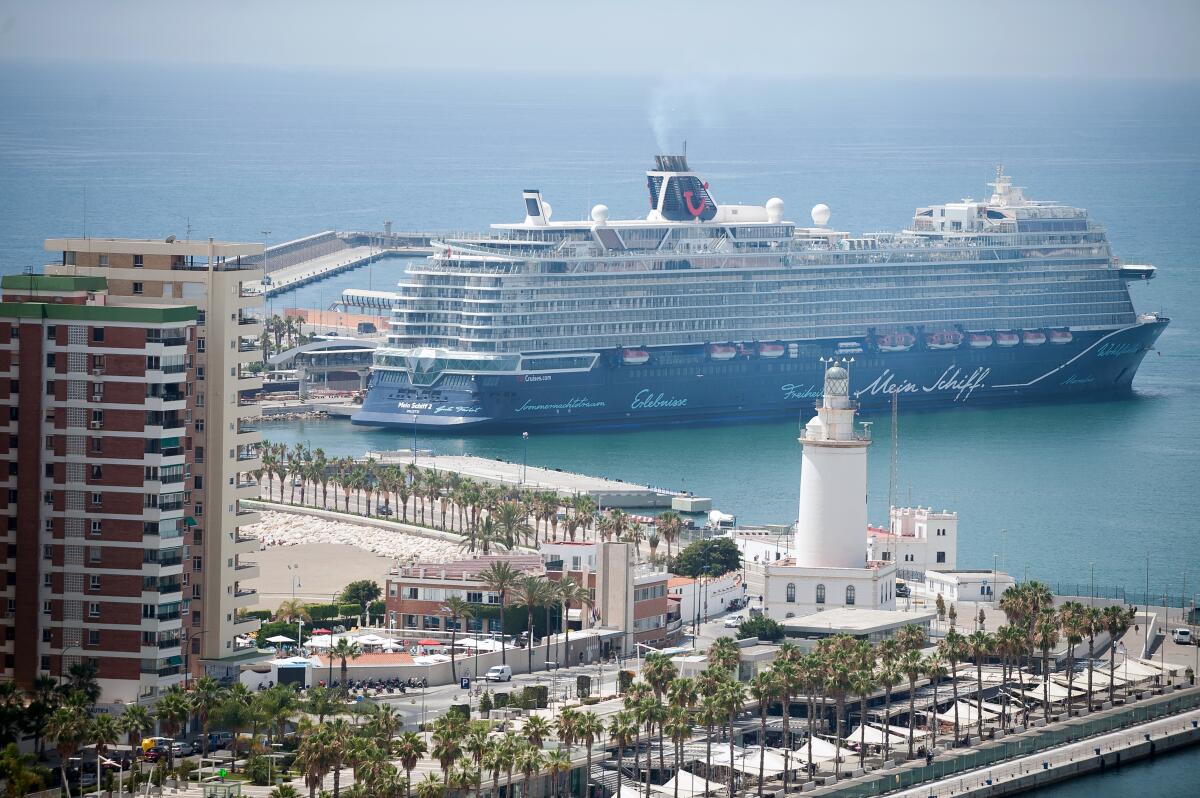
- Show more sharing options
- Copy Link URL Copied!
On a warm morning this week, Florencia Frangi was barely awake when she saw her phone light up with messages: The first cruise ship to dock in mainland Spain in more than a year had sailed into Malaga’s port. She wept with relief.
Frangi wasn’t alone. In tourism-dependent Spanish cities like this historic hub on the country’s Mediterranean Costa del Sol, the streets are again filling with the summertime scents of churros, chocolate and fried fish, now mingled with the buzz of foreign languages.
Across Europe, the long-awaited reopening to tourism is proceeding in piecemeal fashion but at a quickening pace. On Friday, the European Union took a major step forward by formally recommending that its 27 member states lift a ban on nonessential travel from the United States, opening the way to salvaging the summer tourist trade.
Under the EU’s new nonbinding measures, it is up to individual countries to decide on visitor regulations, and Germany quickly said it would allow Americans to enter if they are vaccinated or test negative for the coronavirus. Southern European nations like Spain are in the forefront in advocating maximum mobility, despite risks of reigniting the coronavirus contagion and quarrels over what kind of vaccine certification should be adopted.

In Malaga, Frangi, a young mother who emigrated from Argentina five years ago, had grown desperate as the pandemic raged and her adopted city shut down. Before the virus hit, she managed to support herself and her 4-year-old daughter by selling a few dozen 10-euro souvenir paper fans a day outside the city’s landmark Renaissance-style cathedral.
In a recent grim stretch, though, she sold only one fan — which she and her partner hand-decorate with iconic images from Malaga-born artist Pablo Picasso — in an entire week. When the family was down to little more than pasta in the cupboard, Frangi, with enormous reluctance, had to ask her parents in Argentina for help.
As Europe opens its doors, hosts and visitors alike must cope with a patchwork of rules . For Spain, Britain is usually the main source of tourists, but the country is still blacklisted by the United Kingdom. Germans, though, have been given the go-ahead to travel to Spain and other EU countries — which accounted for the arrival Tuesday of the vessel Mein Schiff 2, operated by the German-based tourism giant TUI.
When the ship docked soon after dawn, word swept quickly through Malaga, a city of a little over half a million people, via radio and TV reports, on Instagram and in texts, by excited word of mouth.
Frangi wasted no time. She spread her display of ornamental fans on the ground on Santa Maria Street, in the cathedral’s shadow, selling five in less than an hour.
But amid rejoicing, there is risk. Particularly with new virus variants in circulation , the reopening carries infection hazards, especially for young Spaniards working in the hospitality and tourism sector.
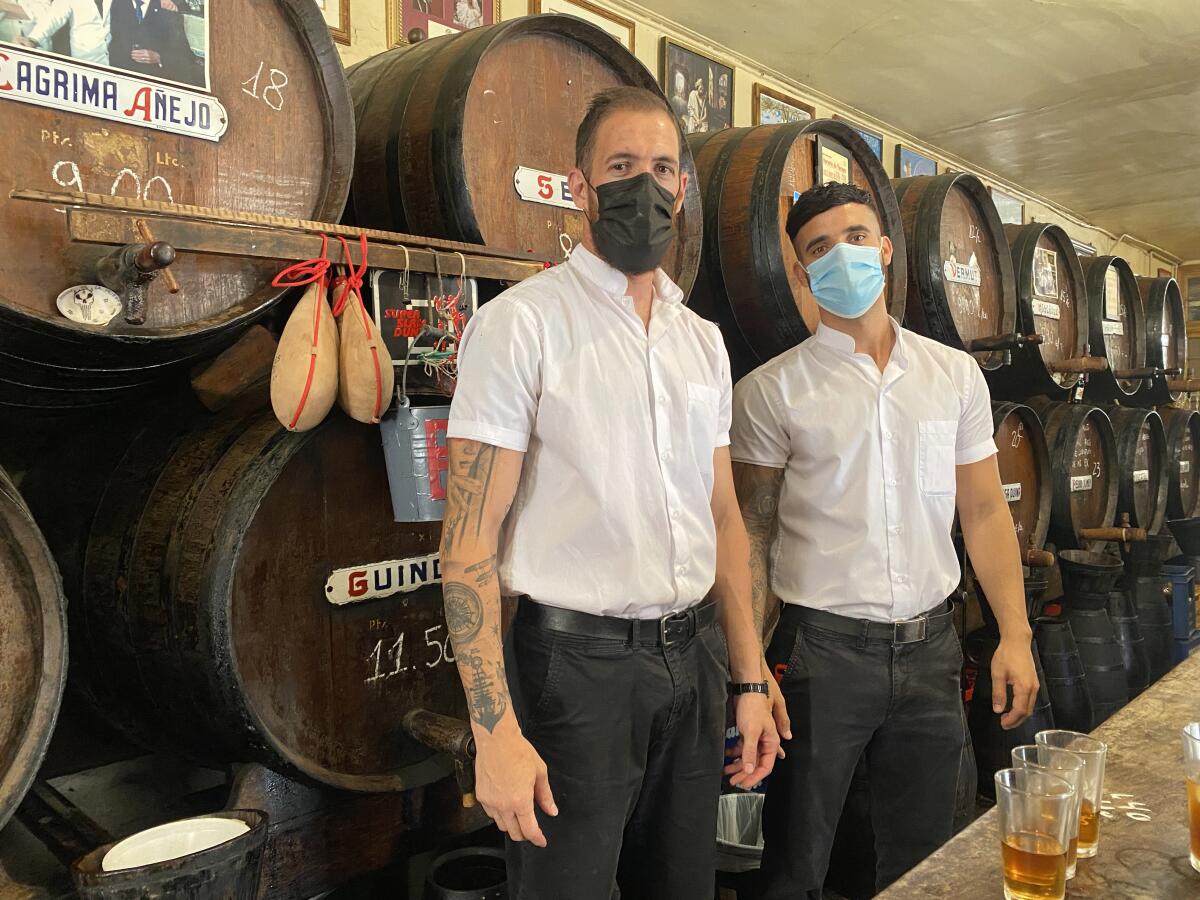
A few yards from the cathedral, at a 19th century bar that claims to be the city’s oldest, waiter David Zayas hustled enthusiastically back and forth, serving wine and beer to throngs of German cruise-ship passengers.
“Seeing tourists gives us hope,” he said. But he acknowledged that other than the bar owner, none of the staff had yet been vaccinated because shots for people in his age group — from his age, 30, up to 39 — had just begun.
Some tourism workers were fatalistic. “Social distance, masks and prayers to the Virgin that we don’t get infected, that’s all we have,” said Cándida Gómez Pérez, 33, the co-owner of a tourism company.
The president of the port authority of Malaga, Carlos Rubio, speaking on public radio, lamented “15 months of emptiness on our docks, 15 months of waiting.” Pre-pandemic, in 2019, Spain welcomed more than 80 million tourists, and the cruise industry alone contributed more than $3.4 billion to Spain’s GDP, according to the Cruise Lines International Assn.
Spain was among the world’s hardest-hit countries in the pandemic, with more than 80,000 deaths and 3.7 million infections. Although cases have dropped off in recent weeks, only 27% of the country’s population is fully immunized.

COVID-19 also worsened an already dark jobs picture in Spain, which leads the EU in youth unemployment. One in four young people in Spain became unemployed during 2020, and almost 40% are still jobless.
Elsewhere in Europe, some people remain more comfortable staying close to home, even as restrictions loosen.
About half of Germany’s population is now at least partially inoculated, and cafes, restaurants, hotels and movie theaters have been gradually reopening. Germans can travel elsewhere in Europe if they wish, but many prefer domestic getaways like Sylt, Germany’s largest North Sea island.
“Overnight, we were booked out for the whole summer,” said Simone Carmen Tenta, the interim manager of a classic hotel on the island that dates back to the 1890s.
In pushing for more tourist mobility, Spain is advocating for a universal framework such as vaccine certificates, already in the working stages in various parts of Europe. But there’s recognition of the subject’s sensitivity, particularly for Americans.
“We do not call it a passport, because the passport seems to give or take away rights,” said Manuel Muñiz, a senior official in the Ministry of Foreign Affairs. He described certification as meant to complement testing requirements.
Among the recent arrivals in Malaga was Patricia Espinoza, a Spanish teacher from North Carolina who had a group of students in tow. She said her compatriots were tired of not being able to travel, especially to Europe, long the favored U.S. tourism destination.
“We Americans are ready,” she said.
Special correspondent Erik Kirschbaum in Berlin and Times staff writer Laura King in Washington contributed to this report.
More to Read

Heat wave lashes southern Europe, leaving some tourists in the lurch
July 14, 2023

Op-Ed: Tourists have more influence on politics and foreign relations than you think
Aug. 15, 2022
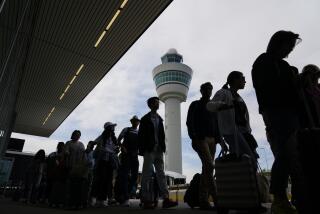
Perfect storm of problems leads to European airport chaos
June 23, 2022
Start your day right
Sign up for Essential California for news, features and recommendations from the L.A. Times and beyond in your inbox six days a week.
You may occasionally receive promotional content from the Los Angeles Times.
More From the Los Angeles Times

California is trying again to extend unemployment benefits to workers on strike
April 24, 2024

World & Nation
Biden administration partners with 50 countries to stifle future pandemics
April 16, 2024

Owners of Colorado funeral home where 190 decaying bodies were found charged with COVID fraud
April 15, 2024

Column: California’s population is on the rise. So much for the claims of the state’s demise
Plan the Perfect Trip to Spain
For some, a visit to Spain is simple, a weekend on a beach on the Costa del Sol or a few days in Barcelona and that's all they are looking for.
But for the rest of us, there is so much to fit into a limited time that some hard choices will be necessary .
Spain is not a very big country if you compare it to, say, the United States, but it is quite culturally fragmented. Some things, such as free tapas with your drink, are only available in a limited area of the country.
Suggested Itineraries
If you know what you are looking for most out of your trip, check out these tips below on which city to start your trip in.
For Cheap Tapas
Choose Granada (fly to Malaga) Why? Spain is one of the few places you can get something for free, as there are many bars where you get a bit of food with every drink you buy. There are such bars all over the country, but the highest proportion of such bars can be found in Granada and other cities in the area (such as Jaen). Leon is a great city for this too.
For the Best Tapas
Choose San Sebastian (and nearby Logroño) or Seville Why? The gourmet tapas scene in San Sebastian and Seville vie for top honors in internationally acclaimed tapas. Logroño, close to San Sebastian, is a lesser-known but equally good challenger.
For Good Weather
Choose Andalusia , but it depends on so much. Why? Well, what's good weather? If you want to spend your time on the beach, you'll probably want to head to Andalusia, unless you're visiting at the height of summer, when it can be too warm here. Otherwise, if you want to go hiking in cool conditions, Galicia is your best bet, though it will probably rain.
For the Best Wine
Choose The Basque Country or Madrid Why? San Sebastian and Bilbao, in the Basque Country, are close to the Rioja wine region, but they also have their own wine: Txakoli. Madrid, as the capital, gets the best of the wine in the country.
For Architecture
Choose Barcelona
Why? One word: Gaudi.
Choose Madrid or Bilbao Why? The Reina Sofia, the Thyssen-Bornemisza and the Prado museums of Madrid and the Guggenheim in Bilbao.
Choose Barcelona Why? For its good access to the Pyrenees .
For Bullfighting
Choose Seville or Madrid Why? Bullrings can be found throughout Spain. But a bullring doth not a bullfighting town make. Bullrings sprung up throughout Spain under dictator Franco as a part of his attempts to bring tourism into Spain. The main places to see bullfighting are in Andalusia (particularly Seville) and Madrid. There is also a number of bullfighting festivals in Spain which are great places to catch a fight. TripSavvy trusts its readers to make their own decisions on the ethics of bullfighting as an attraction.
Unique Things
- Africa is just an hour away. There are plenty of options to take ferries from Spain to Morocco
- In theory, nudity is legal anywhere in Spain.
- Spain has a strong Muslim, Christian, and Jewish heritage.
- No one will tell you that you're lazy for having a sleep in the afternoon! The Spanish tradition of siesta ensures that.
- You can throw tomatoes at people and not get arrested. (As long as you do it at the right time .)
- You can celebrate the most reverent Easter celebrations in the world.
Where to Go and When
Spain can best be divided into four areas: north, south, east and central (western Iberia is Portugal, which is also worth visiting).
Central Spain , which is dominated by Madrid, is home to historic walled cities such as Toledo and Avila , the windmills of Consuegra and grand old cities like Salamanca , Segovia , and Leon .
The east coast is also famous for its sun, sea, and sand, but it also has Barcelona, with its fabulous modernist architecture, and Valencia , the birthplace of paella .
The south of Spain is all about Andalusia , with classic cities such as Seville, Granada, Cordoba, Jerez and Cordoba to visit. Eat classic tapas, drink sherry and explore Spain's centuries-long relationship with Islam at the Mezquita in Cordoba or the Alhambra in Granada. Plus there's also the beaches of the Costa del Sol .
The north is an undiscovered country for many visitors to Spain. But with the modern cuisine of the Basque Country (especially in San Sebastian), the Guggenheim Museum in Bilbao, the wines of La Rioja, cider in Asturias and the UNESCO-protected old town of Santiago de Compostela , there is so much to see in northern Spain. And don't forget all that seafood!
But when should you visit? For guaranteed good weather, the summer is best, though what you would consider 'summer' gets longer the further south you go. The big events of the year for visitors are Easter (Semana Santa), Las Fallas in March, the Tomatina Tomato Fight in August and the Pamplona Bull Run in July. But there is so much happening all year round .
Trip from Madrid
The capital of Spain, Madrid , is the center point of the country, quite literally, around which all else revolves. Most of the other major cities are on the coast, typically at least six hours away from the capital by car. Between these are a lot of agricultural villages and barren land, with Seville, Granada, Leon, and Salamanca the main inland cities of note.
Madrid is a good place to arrive, as the capital is well connected by train, bus and internal flights . But that isn’t to say you should hurry out of the country’s premier city. While Madrid isn’t in the league of other European capitals like Paris and London, it is a living, breathing city with every kind of bar , restaurant and leisure activity you could desire.
Madrid and Barcelona are obviously Spain's two most famous cities and if you can't decide between the two, then this is an ideal way to cover them both.
Nearby Cities
Madrid is a great base for day trips to the wonderful aqueducts of Segovia and the historical delights of Toledo , with El Escorial also a short train ride away.
Madrid's location in the center of Spain, as well as its good train connections, means you'll want to travel by rail from the capital. This isn't always true for other cities in Spain.
- San Sebastian
- Lisbon, Portugal

Trip From Barcelona and Valencia
For a more cosmopolitan experience, there is Barcelona in the northeast, in the community of Catalonia. The locals say it isn’t really Spain at all and, while this is not the time to get into a political discussion, Barcelona certainly does have a different feel to it from the rest of Spain. It's spectacular Gaudí architecture , solemn Barri Gòtic and lively Ramblas street are as iconic as you can get in Spain.
Barcelona or Valencia
There are more flights to Barcelona than Valencia, so it is more likely you'll arrive in Barcelona. Valencia is Spain's third city (by population) and, like Barcelona, is connected to Madrid by the high-speed train (it takes about two-and-a-half hours from both cities to reach the capital).
However, Valencia is not Spain's third city when it comes to tourist sights. This may be an attraction in itself as the small city center allows you to ignore the vast suburban sprawl outside it. But for a full and active trip, you'll get a lot more out of Barcelona than Valencia.
Barcelona is also much better connected to other cities in Spain than Valencia is.
Places to Visit
The top sights outside Barcelona are not cities, but rather the Montserrat mountain and the Salvador Dali museum in Figueres.
After that, you have Tarragona, famous for its Roman ruins, and Girona, which is known for its Jewish quarter .
How to Get to Other Cities From Here
Barcelona's location in the north-east of Spain means it's quite difficult to get to the other extremes of the country, though the high-speed AVE train helps for getting to Madrid and Seville. In many other cases, you'll want to fly.
Connect the dots with these routes.
The Big Three: If you're a city-type that wants to see Spain's biggest cities on your trip here, this Big Three Itinerary covers Madrid, Barcelona, and Valencia, the country's biggest cities by population, in a tight triangle that squeezes in a stop in Zaragoza too. Much of the journey can be taken by high-speed AVE train or by bus if you're on a tighter budget. There's also a Guided Tour of Madrid, Barcelona, and Valencia .
Barcelona to Seville: It's a long way from Barcelona to Seville and you miss out a lot of top sights if you fly direct.
Trip to Malaga or Seville
The tourist brochure image of Spain, with its flamenco dresses, bullfighting, and blistering hot sunshine is not as universal in Spain as many think but if you go to Andalusia, you won’t be disappointed. With the Alhambra of Granada , the Mezquita of Cordoba , and the, well, everything of Seville, there is more than enough in Andalusia to fill several vacations.
Most flights to Andalusia arrive in Malaga, though there are a few to Seville too, so you'll probably choose to base yourself in one of these two cities for most of your time in the south of Spain.
Seville or Malaga
Seville is a far more attractive city than Malaga , with better food and plenty more to do. However, you'll find fewer flights to Seville than to Malaga.
For me, the best thing about a flight to Malaga is that you can connect easily to Granada. In every other way, you are better off in Seville.
Cities to Explore Nearby
All of Andalusia is within reach of Malaga and Seville, while there is also the high-speed AVE train to Madrid from both cities.
Granada is the best option from Malaga, as it is just over an hour away. It also has good connections with Ronda and is slightly better than Seville for getting to Morocco.
From Seville, you have great access to the nearby cities of Jerez and Cadiz.
- Jerez and Cadiz
- Marrakech, Morocco
Suggested Itinerary: Andalusia
Andalusia has the highest concentration of tourist sights in the whole of Spain. The high-speed AVE train can take you from Madrid to Cordoba and on to Seville. After that, a stop in Granada to see the Alhambra is a must.
Trip to Northern Spain
To really experience the diversity of Spain, you have to explore Spain's northern-most regions – Galicia, Asturias or Basque Country. Galicia's national instrument is the bagpipe, while in Asturias you are more likely to find cider than sangria , not what tourists usually expect of Spain!
The City You Should Base Yourself in
This will depend on where you can get flights to. There are airports all along the north coast in Vigo , Santiago de Compostela , A Coruña , Asturias, Santander, and Bilbao , plus Biarritz in France and Porto in Portugal, but most of these are small airports with few flights. If heading to the Basque Country, you're most likely to find flights to Bilbao, if heading to Galicia your best bet will be to Santiago, though you might need to fly to Porto.
How to Get Around
Galicia is well connected by train, with a fast, cheap line connecting A Coruña to Santiago de Compostela and Vigo. If traveling between northern Portugal and Galicia, you'll need to change in Vigo.
And then there's the Basque Country. Bilbao and San Sebastian are, the two main cities, are close together, with regular buses connecting the two. There are also bus and train services to the Rioja wine region.
Asturias, between the two, is a less well connected, with mainly bus services to connect you to the east and the west (trains in Asturias mainly head south to Leon, also great for tapas, and Madrid).
How to Get from City to City in Spain
The Best Time to Visit Spain
Best Spain Tours Starting From Madrid
Top 15 Events in Spain in August
The Very Best of Spain's Cities, Regions, Food, and Drinks
Top 12 Day Trips From Malaga, Spain
Guide to Bus and Train Travel in Spain
How to Travel From Seville to Cordoba by Train, Bus, and Car
Best Internal Flights in Spain
Where to See a Bullfight in Malaga, Ronda, or the Costa del Sol
How Long Should You Spend in Each City in Spain?
The 10 Best Traditional Festivals to Experience in Spain
Spain's Must-See Sights and Attractions: City by City
19 Regions and Islands of Spain: From Worst to Best
The Best Cities in Andalusia
How to Get From Valencia to Cordoba, Seville, Granada, and Malaga
See how jamón gets made in the heartland of Spanish pork
In jabugo, travelers can visit ibérico pigs in the pasture and learn how to carve some of the world’s finest cured ham.
ARACENA, Spain — “How do you like the ham?” asked Manolo Romero de la Ossa, the owner of Casas, a popular restaurant here in Andalusia.
All week long around the village of Jabugo, my wife and I had been eating jamón Ibérico de bellota, the sweet, nutty, salty and creamy product of black-hoofed, free-range pigs that consume a special diet.
“It’s great,” I said. Then I mentioned just how much ham we’d been eating.
“What does that matter?” Romero de la Ossa said, dismissing me with a wave of his hand. “You’re in the ham capital of Spain, even the world, and when it’s this good, you can’t stop. You eat it for breakfast, lunch and dinner.”
He was right. To mistake cured Spanish jamón (pronounced “hahm-ohn”) with the packaged, sliced ham you find at your local supermarket would be like comparing a fast-food burger to a wagyu steak, or Pabst Blue Ribbon with a Czech bottle of Pilsner Urquell. Even Italian prosciutto is not in the same league.
Jamón Ibérico de bellota is a whole other beast. For about three months out of the year, Iberian pigs graze on acorns (or bellotas in Spanish), giving the jamón a rich taste that some Spaniards have likened to a drug.
Jabugo is synonymous with the highest-quality jamón in Spain — and, some would argue, the world. I came here because my Spanish friends would whisper in irreverent tones when anyone uttered the phrase “jamón de Jabugo.” I felt like I was let in on some culinary secret: the best cured ham on the planet comes from a village of about 2,200 people nestled in the mountains of southern Spain.
Pasture tours and jamón museums
Is there such a thing as pork tourism? There is in Jabugo.
The town is so ham-centric that the main square is called Plaza del Jamón, and there is an array of bronze sculptures of jamón-cutters. There are also museums dedicated to Spanish jamón in Jabugo and Aracena.
Jabugo boasts a handful of jamón producers. The most famous is Cinco Jotas. The company offers several services for visitors to literally get their hands dirty and have their palates dazzled. I signed up for the full experience, including a visit to the oak tree-studded pastures to hang with the hogs, a tour of the 19th-century ham-curing cellars, a lesson in how to carve jamón like a pro, and, of course, a tasting.
It all gave me a much better insight into how much time and effort it takes to nurture an unparalleled product, and why it’s so expensive. A leg of black-label jamón Ibérico can cost as much as $1,700 . Acorns are rich in fatty acids and nutrients. You could say they are a porcine superfood.
Spain has a handful of main jamón-producing regions, including Salamanca, Extremadura, the Los Pedroches Valley and Jabugo. But not all jamón Ibérico is created equal.
In 2014, the Spanish government created a color-coded system to inform consumers of the percentage of the pig’s Iberian ancestry. A white label, for example, means the breed of pig is at least 50 percent Iberian; it eats mostly fodder (a random mixture of grain, hay, and vegetables); and is not free range.
On the other end is black label, meaning the pig is 100 percent Iberian (or pata negra), it feeds from November to February on acorns, and is free range. There are also dozens of strict regulations about weight, size and the amount of free-range space the pigs should have, among other factors. Only 6 percent of the jamón Ibérico produced in Spain gets a black label designation.
Iberian pigs have fewer offspring than other breeds, produce less meat and take longer to mature. For those reasons, many ham producers in Spain crossbreed them. Cinco Jotas only uses 100 percent Iberian pigs, making it one of the few jamón-producing companies in Spain that gets the black label designation.
What makes jamón de Jabugo so special
People have been curing jamón in southwestern Spain for a very long time. Even the Romans recognized the area as particularly beneficial for the task of curing pork.
In A.D. 77 Roman writer Pliny the Elder wrote of Iberian pigs , “There is no animal that affords a greater variety to the palate of the epicure; all the others have their own peculiar flavour, but the flesh of the hog has nearly fifty different flavours.” On Christopher Columbus’s second voyage, in 1493, his ships were said to be loaded with Ibérico pigs as they crossed the Atlantic.
Until the late 19th century, ham production in Jabugo was small-scale, limited to a few small family-run slaughterhouses. It was only when a jamón-obsessed businessman, Rafael Sánchez Romero, recognized a growing demand for the high-quality ham from Jabugo that the product started to spread to cities like Seville and beyond. He started Cinco Jotas in 1879.
In 1994, jamón de Jabugo got DOP status — Denominación de Origen Protegida (literally “Protected Designation of Origin”) — a European Union certification that ensures a certain product comes from a specific geographic zone. The zone in question here extends beyond Jabugo to 30 other villages in the surrounding area where the ham produced is officially “jamón de Jabugo.”
“One of the most important factors in shaping the taste of jamón de Jabugo is the microclimate here,” said José Antonio Pavón, the Director General of DOP Jabugo, an the organization that maintains Jabugo’s DOP status. “We get 1,000 liters of rain here — that’s far more than any other ham-producing region in Spain.”
To add to that, something called the Foehn effect — a meteorological term for what happens when there’s a warm, dry condition on one side of a mountain and a cold, wet condition on the other, resulting in extreme temperature change — is caused by the wind from the Atlantic Ocean hitting the high-altitude mountains in Jabugo.
“The daytime temperature in summer can be at 105 degrees, and then at night it can go all the way down to 65 degrees,” said Maria Castro Bermúdez Coronel, the director of communications for Cinco Jotas. “This affects that taste, compared to other jamón-producing regions, in that the warm weather creates a strong flavor in the meat.”
The pigs are slaughtered — or “sacrificed” as Spaniards prefer to say — when they’re around 22 months old. Then the back legs (called “jamón”) and front legs (called “paleta,” or shoulder) sit in salt for a few weeks (one day per kilogram).
Next, they spend time in the drying process, hanging in a temperature-controlled room before being moved to a windowless cellar for a few years. The entire process can take up to five years before a leg of jamón is ready to be sliced and savored.
How to get your hands on jamón Ibérico
Look around your local supermarket — or pretty much any supermarket in the United States — and you likely will not find jamón Ibérico de bellota.
It’s not particularly hard to find jamón serrano, the most commonly produced jamón in Spain, which is good but does not possess the “wow” factor compared to black-label jamón Ibérico de bellota. If you want it, you have to go to a specialty food shop, buy it online or, like me, come to the source.
Antonio Cabrera, a sales manager at Covap, a jamón producer in Los Pedroches Valley near Córdoba, and the grandson of the company’s co-founder, said, “Italian culinary culture is so cemented in the United States, especially on the East Coast, that many people have a cultural attachment to prosciutto.”
Jamón Ibérico was approved for import by the U.S. government only in 2005 , and its emergence in the United States — particularly the black-label variety — has been crawling at a Mediterranean pace. “We have some catching up to do,” he said.
If you’re in Spain and you want to bring back some black-label jamón Ibérico de bellota (or other pork products, Spanish or otherwise), you might want to think twice: It’s illegal.
However, there are plenty of ways to buy it online: You can go straight to the source at Cinco Jotas or visit the websites for Spanish gourmet websites for the U.S. market, including La Tienda , Campo Grande or Despaña .
For a 3-ounce packet of sliced black-label jamón Ibérico de bellota, expect to pay around $40. If you want to splurge and get your own leg, prices vary depending on the weight and if it’s the front leg or the heavier back leg.
Where to go
Our favorite destinations: These 12 destinations are at the top of our wish list for where to go this year, without crowds. In 2023, we explored an Alaskan bear paradise, Brooklyn’s famous pizzerias and a hidden gem in Italy, among other highlights .
Travel like a local: Residents share their favorite places in our top city guides: New Orleans , Rome , Tokyo and Mexico City .
National parks: This comprehensive guide has details on all 63 U.S. national parks. For a deep dive into five of the most well-known, you can listen to the Field Trip podcast . Then explore tips from locals for visiting Yosemite , Glacier and Everglades .
Tales from the road: Dolly Parton has opened a new resort at her theme park complex in Tennessee, while “Fixer Upper” stars Chip and Joanna Gaines have a new hotel in Waco . Road-trippers may be just as excited to see the cartoon beaver at Buc-ee’s , and bargain-hunters should consider a stop at the Unclaimed Baggage store in Scottsboro, Ala.

Taking the train in Spain - all you need to know

Apr 3, 2024 • 15 min read
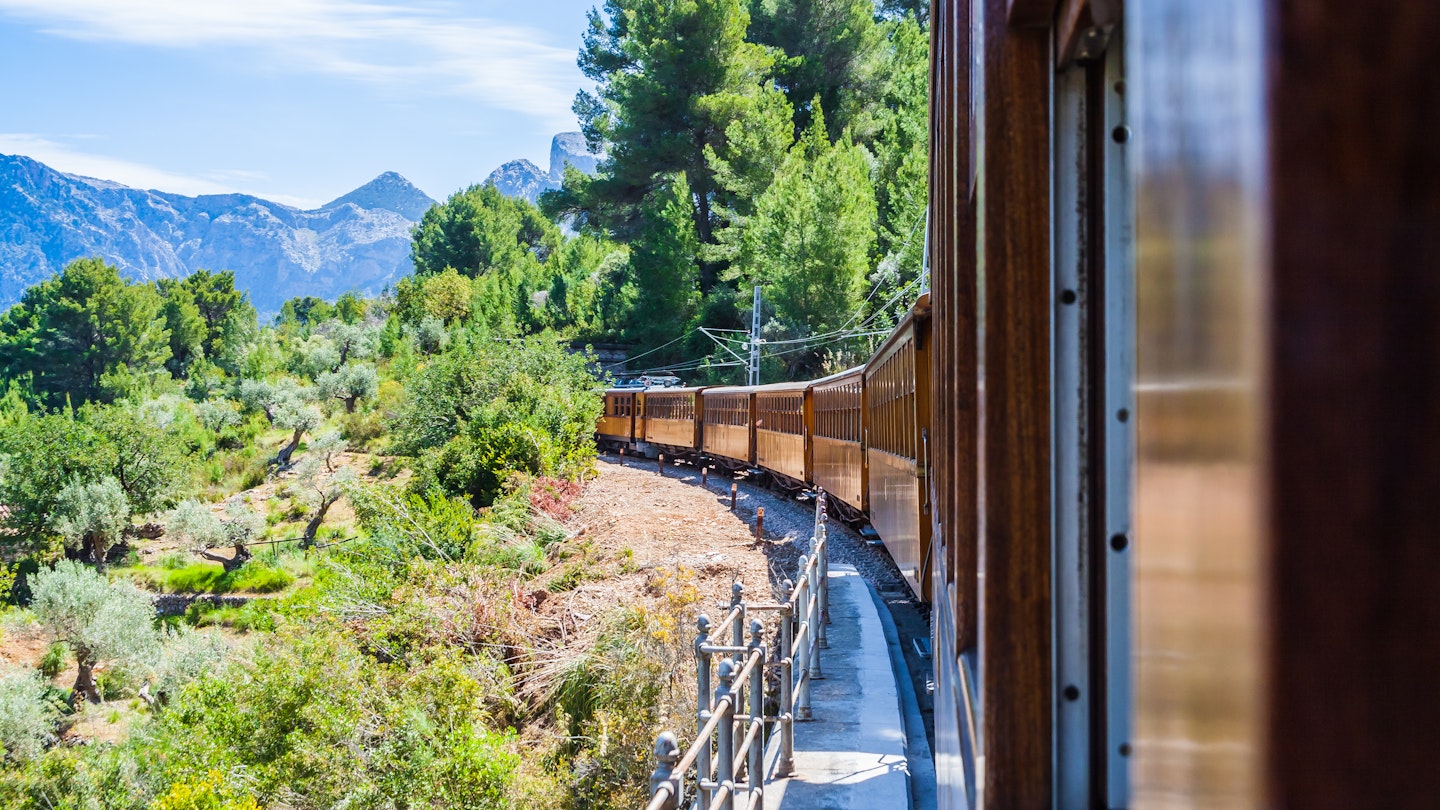
The vintage train from Sóller to Palma de Mallorca is one of the most scenic rail routes in Spain © Shutterstock
Spain boasts Europe’s longest high-speed rail network, second only to China globally, and its trains are exceptional and far-reaching. In one day, you could gawp at Gaudí’s architectural genius in Barcelona , be whisked by rail to Madrid ’s museums, and still arrive in Seville for a sunset flamenco show.
Not that it’s all A to B whirlwind rail routes. There are some outstanding scenic train journeys to slow down and enjoy the Spanish pace of life, whether trundling along the northern coast’s narrow-gauge tracks or meandering into the mountains. And with some new low-cost operators now on the scene, exploring Spain by train has never been more affordable.
With over a thousand stations and thousands more daily departures, getting around Spain by train is a straightforward joy rather than a stressful necessity. Seat reservations on most services guarantee uncrowded carriages, Rioja-serving cafe cars provide perfectly wine-paired panoramic views, and electric-powered trains make journeys even more sustainable. What’s not to love? Here’s everything you need to know to plan a train trip in Spain like a pro.
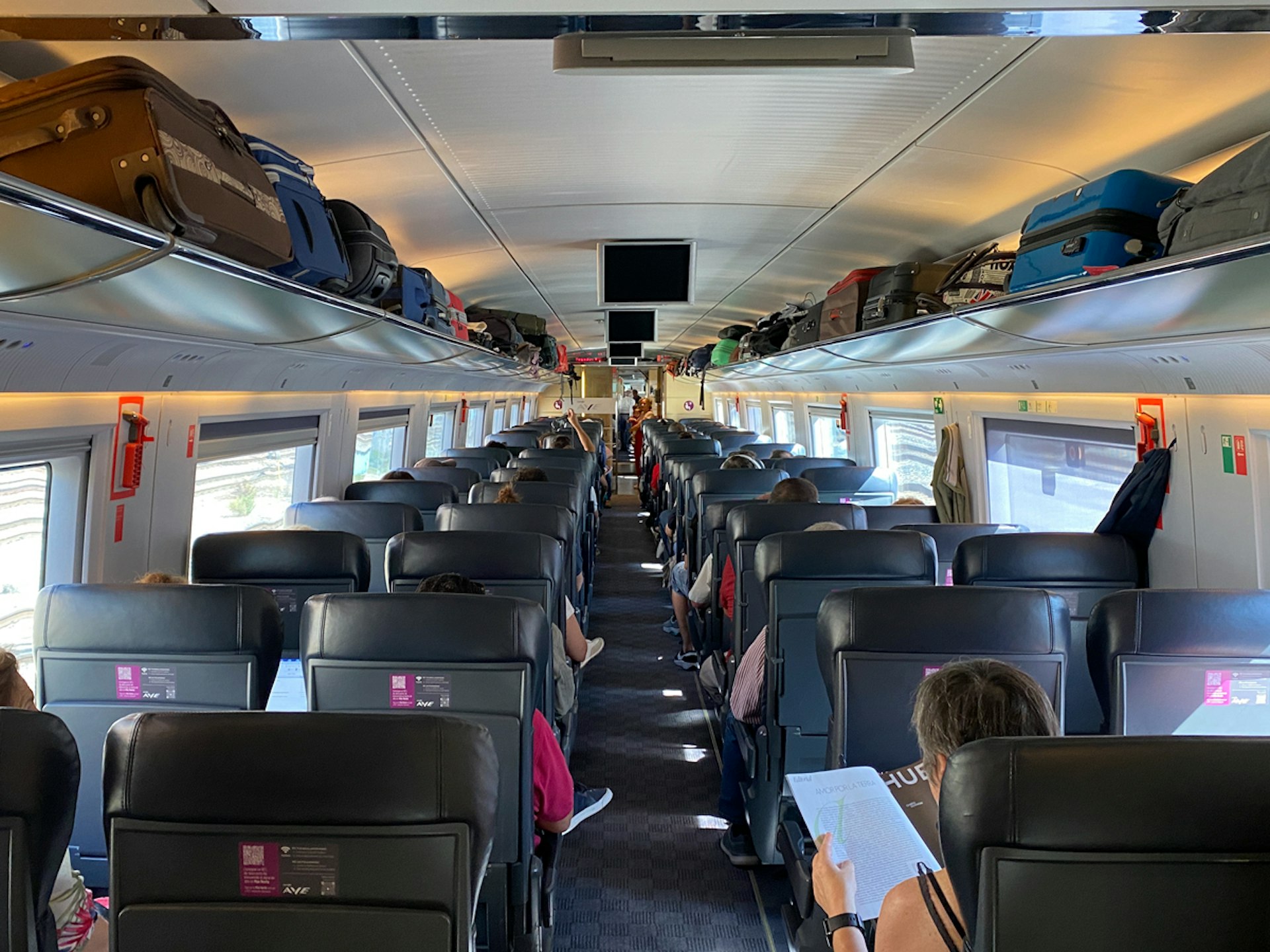
Train services are generally excellent in mainland Spain
You can traverse all four corners of Spain by train, usually on swift, reliable, well-maintained carriages. Few areas aren’t covered by at least a regional service. And where there are coverage gaps, buses will usually take you the final stretch to that pretty medieval village. While strikes can occur, they are rare, and minimum service levels are generally guaranteed. Compensation payments are offered for delays over one hour, which helps keep timetables on track.
Renfe is Spain’s national railway company, operating everything from non-stop regional capital connections to short-hop commuter services. Iryo and Ouigo provide low-cost competition on the main high-speed intercity lines, with the latter’s double-decker trains being a welcome addition.
While the numerous names for differing service and train types can be confusing, the trains in Spain can generally be divided into three categories:
- High-speed, mainly long-distance (larga distancia) services link many major cities, mainly via Madrid. These full-service trains can reach 310km/h (193mph) and include Renfe’s AVE (Alta Velocidad Española), its new no-frills Avlo counterpart, and Iryo and Ouigo. There’s an ever-growing network of high-speed routes , including the popular Barcelona–Madrid, Madrid–Seville, and Madrid–Valencia lines.
- Mid-distance services – although they can sometimes cover long distances and reach speeds of 250km/h (155mph) – make up the majority of other major routes. Renfe services these under names including Media Distancia, Avant and Alvia. Intercity and Regional Exprés services are somewhat slower but only call at major stations. Popular routes include Madrid– Toledo , Granada–Seville, and the Euromed coastal service between Barcelona and Alicante . Nearly all long and mid-distance services use sleek, modern carriages.
- Slower trains , including Regional, Proximidad, and Cercanías commuter services (Rodalies in Catalonia), complete the network. The older Cercanías AM trains, previously FEVE, mainly operate on the northern coast’s picturesque narrow-gauge tracks.
Nearly all large and medium-sized train stations are staffed and contain shops or cafes. High-speed train stations operate similarly to airports, with luggage security scanners and boarding gates. It’s advisable to arrive 20–30 minutes early, especially as boarding can close five minutes before departure. The bonus is you’ll have time to admire the stations. Some, like Toledo’s Mudejar-style ticket hall and art nouveau Bilbao Concordia , are attractions in their own right.
There are tourist trains and unique rail services too
In addition to standard train services, Spain has an exceptional selection of specialist rail routes known as “ tourist trains .” These range from seasonal, short routes, such as the scenic Tren dels Llacs in the Pre-Pyrenees, to indulgent, multiday sojourns like the luxury Transcantábrico train hotel. There are currently no standard domestic night trains.
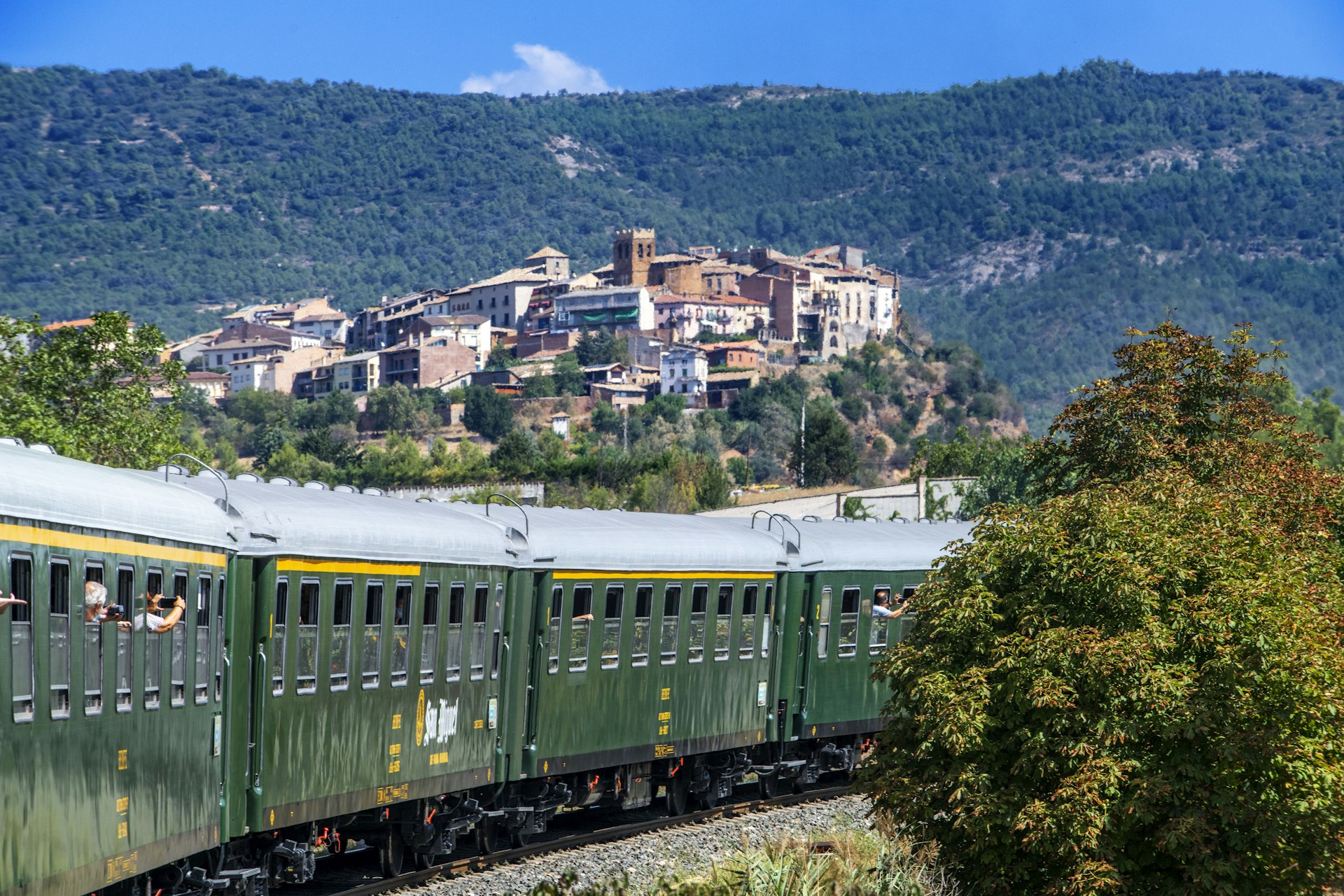
International and island rail routes are limited
Away from the mainland, the rail situation is starkly different. The Canary Islands have no train services, and only Mallorca in the Balearic Islands has limited rail connections . These consist of three short, modern lines and the vintage Sóller train.
Traveling to and from France by train is possible on France’s TGVs (from Paris) and Renfe’s International AVE services to Marseille and Lyon . Fares start from €29. You can also cross via Hendaye in the Basque Country or take the slower, scenic sleeper service via the Pyrenees . The Trenhotel (night service) between Madrid and Lisbon has been discontinued, leaving the Tren Celta between Vigo and Porto and the slow route to Lisbon via Badajoz as the only connections with Portugal . Work continues on improving the tracks to accommodate a direct, high-speed link between the two Iberian capitals.
Book ahead to save money and guarantee your seat
Spain’s rail operators all use dynamic pricing for high-speed and long-distance services. Therefore, early booking is advised, especially as seat reservations are mandatory. Advanced Avlo tickets between Madrid and Barcelona start from €7, with Ouigo and Iryo also offering competitive pricing on primary routes. A same-day ticket can sometimes cost more than 10 times more than booking in advance. Prices are less competitive on routes solely operated by Renfe.
When booking tickets online to or from major cities, use the dropdown city name followed by todos (all) to check for direct and affordable tickets from all stations. Provide the Passport or ID number of the photo document you’ll be traveling with, as tickets are personal. The second surname can be left blank – Spanish people take both their father's and mother’s surnames. Tickets can be printed, collected at self-service machines, or displayed as QR codes on mobile devices. Overall, Ouigo and Iryo's websites are easier to navigate than Renfe's, which can be glitchy. While most people would recommend using a third-party booking service – handy for comparing prices between all operators – direct reservations avoid booking fees.
Even short-distance, popular services with fixed fares (some mid-distance and regional trains) can fill up. I’ve previously struggled to get last-minute weekend tickets on the Madrid to Toledo route. Secure all tickets ahead if your vacation coincides with a major holiday such as Easter (Semana Santa) or Christmas, including around Three Kings Day on January 6.
Iryo and Ouigo release tickets many months ahead. Renfe’s tickets should be available at least 60 days ahead, but this isn’t always true. Check regularly in the months leading up to your departure and sign up for newsletters on the three websites to receive ticket availability and discount updates.
Occasionally, two single fares (ida) can be cheaper than a return (vuelta) . Reservations can also be made at station ticket machines (in English) or staffed desks. Larger stations may have separate sales points for particular types of tickets.
You’ll always be assigned a mandatory seat reservation. However, if you’d prefer to select your own to guarantee a window, you can change it for a nominal fee. Confusingly, Renfe’s website has this step after choosing a payment method.
Cercanías and Cercanías AM tickets can’t be purchased in advance and should be purchased at the ticket office, self-service machine, or onboard from the conductor when traveling from the tiniest unstaffed stations. This is the only time you’re allowed to board a train without a ticket.
If you wish to upgrade from basic class (básico) on high-speed routes, you can choose from Elige, Elige Confort and Prêmium on Renfe, or similar options on Iryo. Upgrades can include access to premium station lounges, at-seat food service, and more spacious seats. Solo travelers may want to upgrade to enjoy an individual seat in the 2+1 configured carriages. Ouigo allows these seats as a paid add-on without upgrading.
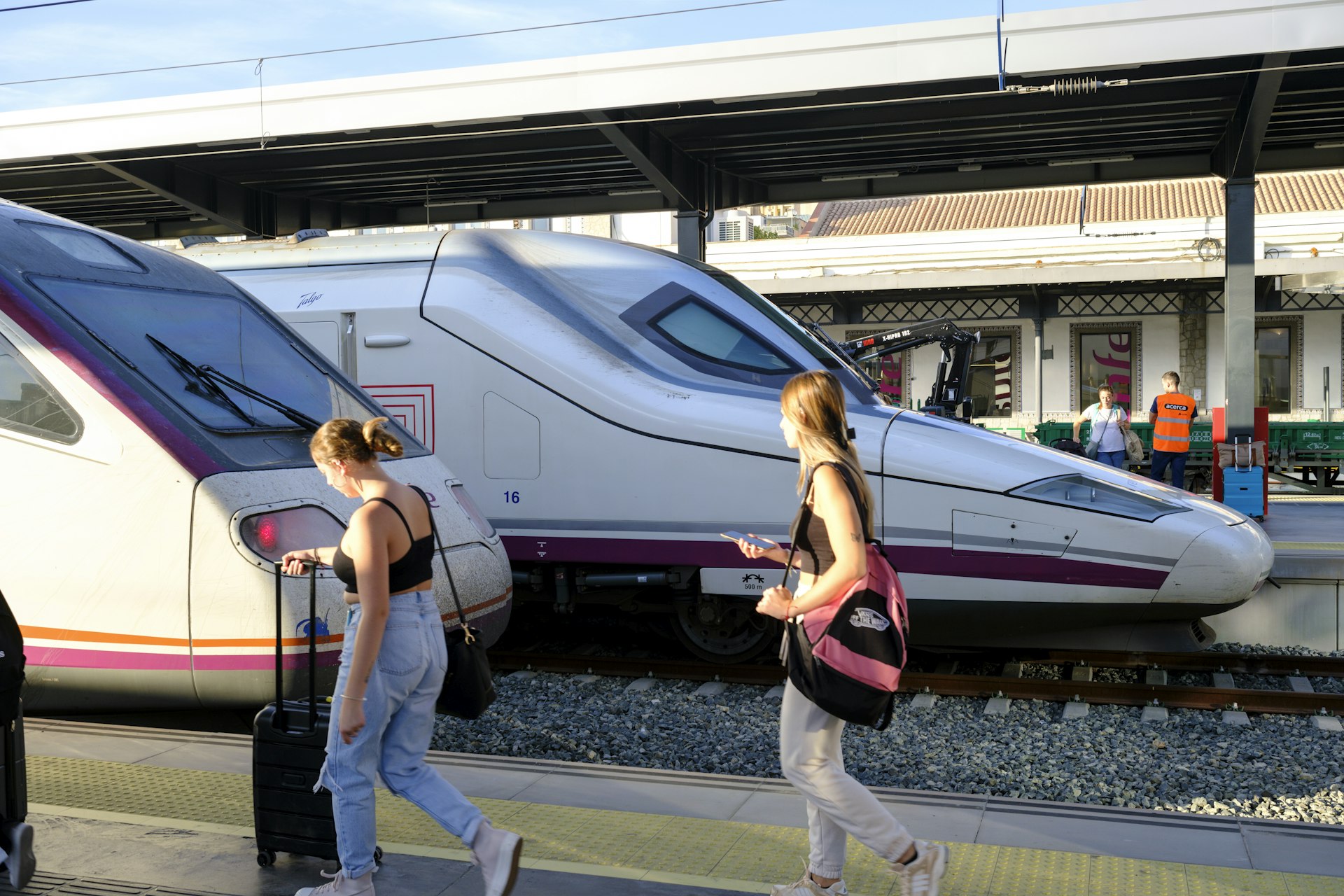
Discounts and offers: know your benefits and bring ID
Much noise was made about the launch of Spain’s fixed-price travel pass . Yet this system, established to offer discounted fares on repeat return trips, is primarily aimed at locals and commuters.
Renfe does offer a Spain Rail Pass for travelers , covering between four and ten journeys. However, depending on the routes you plan to take, pre-booking discounted, advanced fares can be cheaper. Some region-specific options exist, such as the better value three-day Galica Rail Pass .
Other discounts available on Renfe include:
- Small group discount when booking four or more travelers together.
- Seniors discount, up to 40%, for over 60s. However, this requires purchasing a card ( La Tarjeta Dorada ) in person before making the reservation. Advanced, discounted fares can be better value.
- Youth Discounts for under 25s with a European Youth Card or suitable International Student Card. A digital card can be purchased online by citizens of most countries.
- Babies travel for free, as do children, although the age cap varies between operators.
Considering an Interrail or Eurail pass? Check on any savings first. All high-speed trains in Spain require seat reservations, an additional cost not included in these passes. Avlo, Iryo, and Ouigo are likewise excluded, and these cheaper advanced tickets may be better value than using the pass, though there is less flexibility.
Money-saving tip: high-speed trains include a free local ticket
If you’re traveling on a high-speed AVE or long-distance service operated by Renfe or Iryo, Combinado Cercanías is included. This allows for free use of local Cercanías trains to reach your departure station and again on arrival. Scan the QR code at barriers, or use the PDF code to get a zero-priced ticket at Cercanías’ self-service machines.
Seat reservations ensure most train journeys don’t feel crowded
Traveling by train in Spain is so enjoyable because all long and mid-distance services require a seat reservation. With no congested corridors or jostling vestibules, these trains never feel crowded, even when full. However, some regional and Cercanías services can be packed, particularly around commuter hours and Friday and Sunday evenings. You might want to avoid peak times or, when available, pay for a regional service seat reservation.
Plan around major events and regional holidays during your trip, such as Semana Santa, when ticket demand and crammed suburban trains are common. Trains in Spain operate every day of the year, though some services may finish earlier on public holidays. If you’re traveling on weekends or during holidays, check onward public transport in advance as small, rural stations may have a reduced weekend bus service.
Train can be the fastest, most affordable transport method
Using the train in Spain can be quicker and cheaper than flying. For example, a flight from Madrid to Barcelona takes 1¼ hours compared with 2½ hours by high-speed rail. But once you factor in security checks, out-of-city airport transfers, and runway taxi times, the overall journey length by plane becomes longer.
Driving distances are considerable. The same journey by car will take closer to seven hours. It’s unquestionably worth renting a car if you’re planning a road trip , but generally, long-distance jaunts are best by rail.
Most train terminuses are connected to city buses and, in larger metropolises, commuter rail or metro systems. Barcelona-El Prat Airport and Madrid–Barajas Airport are on the train network. If you wish to visit smaller towns or villages that are not on the train network, consider other ways to get around Spain .

Onboard facilities differ between service types
All of Spain’s high-speed train services are spacious, comfortable, clean and well cared for. Carry-on luggage can be placed in overhead racks, while storage areas at either end of the carriage accommodate bulkier luggage. Popular services (especially on Friday and Sunday evenings) can quickly fill, and train staff will usually assist in rearranging suitcases to fit. Cercanías services can be more dated and crowded and often lack enough dedicated luggage space.
If you’re traveling by bicycle, check the luggage policies of Renfe and Iryo . In some instances, bikes must be disassembled or an additional fee paid.
The dining carts on Spain’s trains are typically stand-up, cafe-style rather than seated dining carriages. They’re good for stretching your legs or getting an alternative window view, but dining at your seat table is often more comfortable. A selection of hot meals, snacks and drinks – usually all of decent quality – are available, and certain ticket types offer pre-ordered meals served at your seat. Iryo has particularly impressive dining options .
On some routes, a trolley service may be provided in addition or as an alternative. Mid-distance and Avlo services have vending machines rather than dining carts. Bringing your own food and even alcohol onboard Renfe’s services isn’t a problem.
Complimentary (sometimes patchy) wi-fi is provided on Iryo and Renfe’s high-speed services, alongside entertainment portals accessible on your device. Ouigo charges per connection. Plug sockets (F-type) are available at seats on high-speed and mid-distance trains. Nearly all trains, except commuter services, have toilets.
Plan the perfect train trip with these scenic routes and tips
The most popular train routes for travelers in Spain are the high-speed connections that rocket between Seville, Madrid, Barcelona and Valencia. But riding the rails in Spain isn’t only about barrelling between urban sprawl. These are some of our favorite scenic rail routes worth planning into your trip.
- Santander to Oviedo : Cross the lush landscapes of Northern Spain on this slow, scenic rail route using Cercanías AM’s narrow-gauge tracks. This six-hour journey provides some of the expensive Transcantábrico Train’s panoramas for a bargain €16.55. There are no seat reservations, which is handy, as you can switch sides to marvel at both the sparkling Bay of Biscay and the mighty Cantabrian Mountains , Spain’s answer to the Dolomites.
- Barcelona to A Coruña : Once served by the discontinued sleeper Trenhotel, this is one of Spain’s longest rail routes, taking nearly 14 hours. The 9:05am Alvia departure can be affordable to cross seven of Spain’s autonomous communities. Pack snacks and pay for a window seat (ideally on the right) to see the full scope of Spain’s landscapes, from arid pastures and fertile farmlands to the verdant Galician Massif . Consider hopping off a few stops early in Ourense to use the town’s free-to-access thermal pools the following morning.
- Granada to Almería : Leaving the magnificent Moorish Alhambra behind, set off across western Andalucía towards the coastal city of Almería. It’s a showstopping three-hour journey traversing the foothills of the Sierra Nevada, snow-capped peaks looming beyond, before cutting through carpets of cork trees. Book a late afternoon departure for ethereal golden light, or take two single tickets to plan a lunch pause at Guadix, best known for its cave houses.
- Palma de Mallorca to Sóller: Step onboard the rickety, wooden carriage of Ferrocarril de Sóller , constructed in 1912, for a one-hour-long trundle from Mallorca's capital to the pretty port town of Sóller. En route, you’ll wend through the Tramuntana Mountains, unlit tunnels, and citrus groves close enough to touch. All seats are excellent, but you might want to stand in the open-air platforms between carriages.
- Zaragoza to Canfranc : A one-way ticket on this twice-a-day, 2½-hour regional train costs just €16.90, and you’ll get plenty of panoramas for your money, especially after Huesca when the tracks slowly climb up into the Pyrenees. Our resident rail expert, Tom Hall, calls it one of Europe’s best train routes , partly because the landmark Canfranc Station has recently been reborn as a grandiose hotel .

Station tips when traveling Spain by train
Most large cities have multiple train stations, so always confirm departure points. When traveling to dedicated AVE stations outside major cities, check the station’s distance from the city center and pre-plan your connecting travel. Some stations, such as Antequera ’s Santa Ana, can be as far as 15km (9 miles) from the Old Town.
Spain’s largest stations, such as Madrid Atocha and Barcelona Sants, can be confusing due to split-level and separated boarding areas for different services. Don’t be afraid to ask for help navigating the station. A quick flash of your ticket will soon have you pointed in the right direction.
All major stations have cafes and kiosks where you can pick up food, although preparing a train picnic from a delicatessen might be preferable. Still, a quick tapas in Atocha's Tropical Garden, even if the pond-residing turtles have now been rehomed, is a solid start to any journey. If you’re on a connecting service with time to explore beyond the station, most larger terminals have lockers or left luggage desks (consigna) .
Many stations are accessible, but there’s room for improvement on older services
Adif, the agency in charge of Spain’s rail infrastructure, provides in-station and boarding assistance for travelers with accessibility needs via the Acerca service, offered at 145 stations.
When booking tickets online, H seats – accessible spaces that can anchor a wheelchair – can be requested on the opening screen, and Acerca assistance can be requested later in the booking process. A minimum of 12–48 hours' notice is stipulated, depending on the operator. However, in larger stations, staffed service centers can usually provide support without pre-booking if you arrive and register at the desk ahead of travel. Check which facilities are available at each station on Adif’s website .
In addition to offering boarding support (many train types require a stair-climber lift, not just a ramp, while others like Avlo have level boarding), Acerca can provide technical aids for hearing and a guided sight service. Contact Adif Acerca for information on induction loop systems or to discuss alternative routes should your planned journey include a non-accessible station without in-person assistance. Tactile paving, step-free access, and elevators are installed at most major stations, and nearly every train has a conductor or staff member onboard who can assist.
On high-speed, long-distance, and most other services, wheelchair-accessible bathrooms are located in carriages with H seats. Ouigo trains have a call button on adapted seats to provide food and drink service, as the cafe is located on the top deck. Cercanías AM carriages have no H seats but offer a dedicated space for wheelchair users with tie-downs. However, many older, narrow-gauge trains lack accessible bathrooms.
Explore related stories
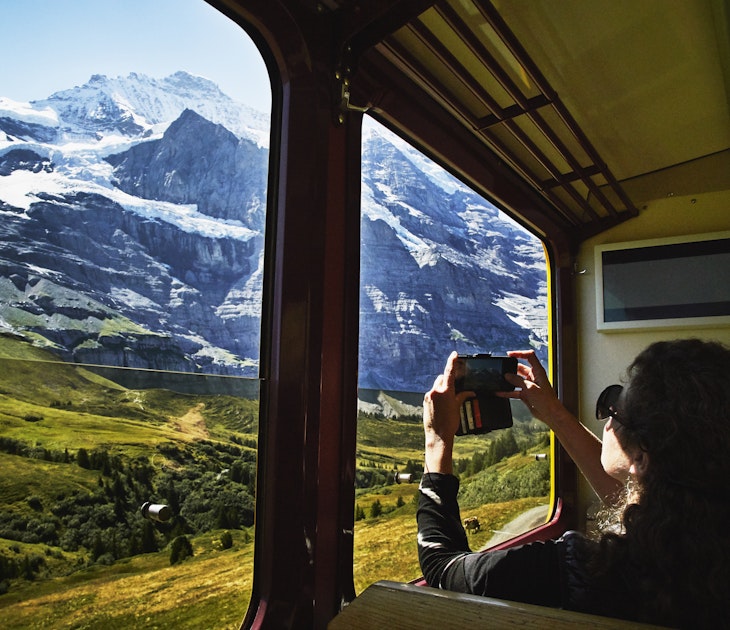
Sustainable Travel
Jan 16, 2024 • 8 min read
Rolling forests, saw-toothed mountains, bridges spanning river gorges - these European train rides put on quite a show.
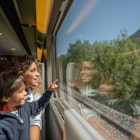
Dec 25, 2023 • 11 min read

Dec 19, 2023 • 6 min read

Nov 1, 2023 • 4 min read

Oct 19, 2023 • 8 min read

Oct 6, 2023 • 8 min read
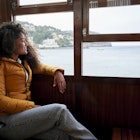
Jun 26, 2023 • 5 min read

Jun 18, 2023 • 6 min read

May 19, 2023 • 12 min read
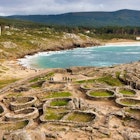
May 5, 2023 • 7 min read
The pain in Spain: Where are Brits not so welcome this summer?
- Thursday 25 April 2024 at 12:14pm
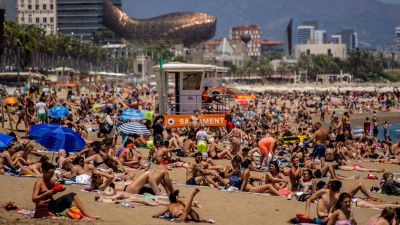
Tourists are facing a backlash from residents in Tenerife as islanders say they are struggling to cope with the influx of visitors, ITV News Europe Editor James Mates reports
Spain is one of the most popular destinations for British tourists, but the country is feeling the backlash of the cheap flights and sunny climes as large numbers of visitors are causing big problems.
A number of provinces have taken matters into their own hands and are providing guidance - and in some case strict rules - for tourists visiting over the summer, as they try and tackle overcrowding and the problems that come with it.
Tourism represents nearly 12% of Spain’s economy but there has been growing pressure from locals for governments to put measures in place to reduce the number of visitors.
So which parts of Spain might not be so keen for Brits to descend this summer?
Canary Islands
Protestors in Tenerife started a hunger strike on April 12 as part of a wider campaign demanding the Canary Islands government tackle the effects of excess tourism in the region.
Hundreds of people linked arms to form a human chain to demonstrate against the building of an additional hotel and beach resort, as well as future projects aimed at attracting more tourists. The hunger strike was still underway on Wednesday at the time of writing.
The wider movement is called Canarias Se Agota, which means 'The Canaries Have Had Enough'.
In an Instagram post the organisation said the Canary Islands are "exhausted" because of the "excessive tourism" and the "lack of attention to the basic needs of the population".
Last year the then-mayor of Barcelona described tourism as a "great challenge" for the city, and suggested there needed to be a way to limit the number of people pouring in during holiday season.
Ada Colau limited the number of hotel beds in the city during her tenure, highlighting that the city needs homes so there is space for residents to live in the busy centre.
Her successor, Jaume Collboni, banned cruise ships from docking at the Muelle Barcelona Norte and the World Trade Centre docks, a mile away from the Gothic quarter, in October.
Now cruises must dock at the Moll d’Adossat pier, which is a 30-minute bus ride from the historic centre.
Meanwhile one neighbourhood went as far as to get a local bus route removed from Google and Apple Maps to discourage tourists from using it as it was often too busy for residents to fit onboard.
“We laughed at the idea at first,” a local activist, César Sánchez, told the Guardian. “But we’re amazed that the measure has been so effective.”
Wider Catalonia region
Barcelona is the largest city in the Catalonia region, but authorities for the entire area are considering imposing water restrictions on tourists if domestic consumption does not decrease.
The Catalan government is considering a restriction of 100 litres of water per day per tourist for hotels for three months as it looks to tackle drought in the area.
According to Barcelona’s hotel guild, the average tourist to Barcelona in 2022 used some 163 litres per day, while the figure rose to over 240 litres for luxury hotels.
The limits for tourists would not include the water used to fill swimming pools.
Majorca has introduced a series of new rules over the last couple of years that aren't explicitly preventing tourists from enjoying the island, but do seek to weed out "drunken tourism".
A number of restaurants banned shirtless, costumed or football-shirt-wearing travellers, according to Juan Miguel Ferrer, the chief executive of Palma Beach.
Swimwear, trunks and novelty accessories bought from roadside vendors - such as gold chains - are also said to be banned.
"Since May 10, we’ve been suffering the arrival of large groups of tourists who are only looking to get drunk in the streets, or on the seafront or even on the beach,” Mr Ferrer said in 2022.
“You’re not going to come here in beach clothes or come straight from drinking in the streets."
Alicante introduced new noise-related restrictions in 2023 in response to influxes of tourists causing disruption for locals.
Rules had originally been put in place in 2019, but they were strengthened last year. The array of noises encompassed by the regulations include open air concerts, use of musical instruments on beaches, and shouting.
The local city council warned of hefty fines for anybody flouting the rules.
Money matters and passport pains
Post-Brexit, Brits are subject to the 'third states' rules Spain imposes on visitors from outside the European Union.
A traveller visiting Spain must "present proof of having sufficient financial means for the proposed stay", or at least the ability to legally obtain that money, according to the Spanish foreign ministry.
In 2023, the minimum amount required was $120 (£97) per person per day, and the traveller had to have at least $1100 (£885) or its equivalent in foreign currency regardless of the length of the stay.
Travellers can show they have enough money by presenting cash, travellers' cheques, a credit card with a bank account statement, an up-to-date bank book or similar. The ministry states that bank letters or online bank statements are not accepted.
Brits flying abroad are also being warned about post-Brexit passport rules , which have landed travellers with hefty fines.
Some families are finding themselves thousands of pounds out of pocket when they have been banned from boarding flights due to the rule changes.
When the UK was a member of the EU, British passports remained valid up to and including their expiry date for travel to other EU countries, but now passports need to be valid for valid for at least three months after the date you intend to leave the EU country you are visiting.
More details of the post-Brexit rules on passports can be found on the ITV News website .
Want a quick and expert briefing on the biggest news stories? Listen to our latest podcasts to find out What You Need To Know…
The Alhambra in Spain, for one NYT Crossword Clue
The Alhambra in Spain for one Crossword Clue Answers are listed below. Did you came up with a solution that did not solve the clue? No worries we keep a close eye on all the clues and update them regularly with the correct answers.
THE ALHAMBRA IN SPAIN FOR ONE NYT
Leave a comment cancel reply.
Your email address will not be published. Required fields are marked *

IMAGES
VIDEO
COMMENTS
36 Hours in Córdoba, Spain. Andrew Ferren regularly reports on travel, art and museums for The New York Times. He has lived in Spain for 20 years and frequently visits Córdoba. The winds of ...
Explore everything from culture to cuisine during a weekend in the Spanish capital.Subscribe on YouTube: http://bit.ly/U8Ys7nIf you are wondering what to do ...
The cuisine is gamey and delicious: hot goat-cheese salad with pine nuts and garum (black-olive and anchovy paste dating back to Roman times), oca amb naps (goose with turnips), and a blackberry sorbet not to miss. C. Cort Reial 9, Girona, Catalonia, Spain. PHONE: 972/217379. MC, V. Closed Mon.
Lose yourself in Granada and let your eyes and taste buds feast on the Moorish architecture, the Alhambra fortress, and the tapas.Subscribe on YouTube: http:...
The New York Times included Madrid on their list, among other reasons, because the capital of Spain will play a key role in the celebrations that will be held worldwide regarding the 50 th anniversary of the death of Pablo Picasso. The renowned Spanish painter and co-founder of the Cubist art movement died on April 8, 1973, and several events and exhibitions will take place in different cities ...
The New York Times has recommended three great parts of Spain to travel to if you want to 'go traditional' - and although we could name you hundreds without having to think about it, that's another story for later (but we will just mention the easy-to-reach coastal towns in the province of Castellón - Peñíscola, Vinaròs, Oropesa del Mar ...
The city is the perfect travel gateway to Spain's most underrated region. Declared Europe's Third Monumental Complex and a UNESCO World Heritage City decades ago, Cáceres' recent surge in ...
Spain travel guide. When to go, what to do, and why you'll love it. Traditional festivities in Feria de Caballo, Jerez de la Frontera. ALAMY. Chris Haslam. Thursday February 01 2024, 9.00am, The ...
With luggage in tow, tourists arrive at a train station in Madrid, Spain. (Claudia Núñez/Los Angeles Times) COVID-19 also worsened an already dark jobs picture in Spain, which leads the EU in ...
2. Being cashless is common. Card is king in Spain. The main tourist hubs such as Madrid, Barcelona, San Sebastián and Ibiza are generally credit card-friendly destinations. In fact, you could go cashless for days and pay for your meals, drinks, taxis and bus fares without a problem using a credit or debit card.
The south of Spain is all about Andalusia, with classic cities such as Seville, Granada, Cordoba, Jerez and Cordoba to visit. Eat classic tapas, drink sherry and explore Spain's centuries-long relationship with Islam at the Mezquita in Cordoba or the Alhambra in Granada. Plus there's also the beaches of the Costa del Sol .
The return of international travel is good news for Spain. According to data reported by CaixaBank , tourism accounts for 12.3% of the country's GDP and 12.7% of its employment.
Travel like a local: Residents share their favorite places in our top city guides: New Orleans, Rome, Tokyo and Mexico City. National parks: This comprehensive guide has details on all 63 U.S ...
If you're confining your trip to Madrid, Barcelona and Lisbon, you are missing out on some remarkable experiences. Cádiz attracts some tourists for its beaches. Others come for the food ...
Airport security will not be as painstaking in Spain in 2024 as previously, but ticket prices may be higher. Photo: Yeray Sánchez/Unsplash Relaxed airport security, new direct flights, extra taxes on plane tickets, new international train links, free or discounted public transport, good news for drivers and more - there are lots of changes to expect when it comes to travel in Spain in 2024.
Using the train in Spain can be quicker and cheaper than flying. For example, a flight from Madrid to Barcelona takes 1¼ hours compared with 2½ hours by high-speed rail. But once you factor in security checks, out-of-city airport transfers, and runway taxi times, the overall journey length by plane becomes longer.
Wild Terrains, a certified B-Corp travel company specializing in experiences for women, has planned three days of a 10-day Argentina tour to be sober-inclusive in Mendoza.
Spain is one of the most popular destinations for British tourists, but the country is feeling the backlash of the cheap flights and sunny climes as large numbers of visitors are causing big problems.
WEEKS IN SPAIN NYT. SEMANAS; Last confirmed on March 13, 2024 . Please note that sometimes clues appear in similar variants or with different answers. If this clue is similar to what you need but the answer is not here, type the exact clue on the search box. ← BACK TO NYT 04/21/24 Search Clue:
THE ALHAMBRA IN SPAIN FOR ONE NYT. PALACE; Last confirmed on April 18, 2024 . Please note that sometimes clues appear in similar variants or with different answers. If this clue is similar to what you need but the answer is not here, type the exact clue on the search box. ← BACK TO NYT 04/22/24 Search Clue: